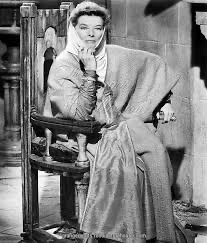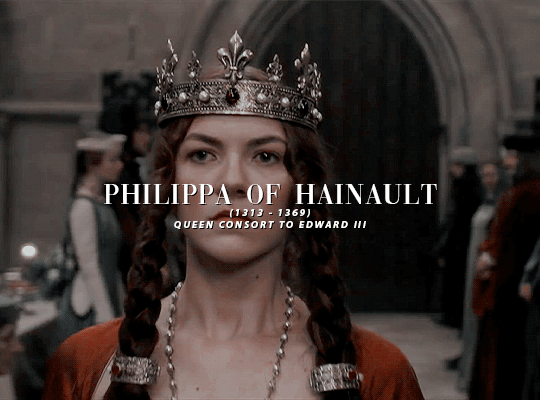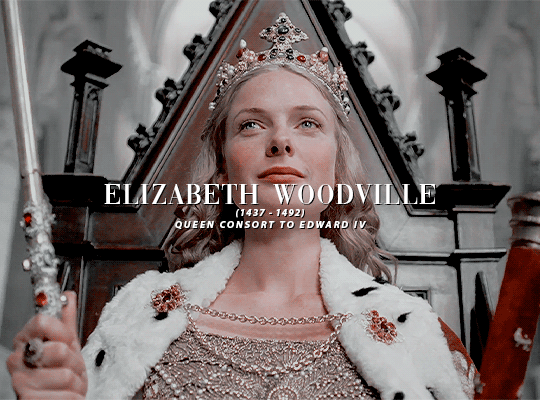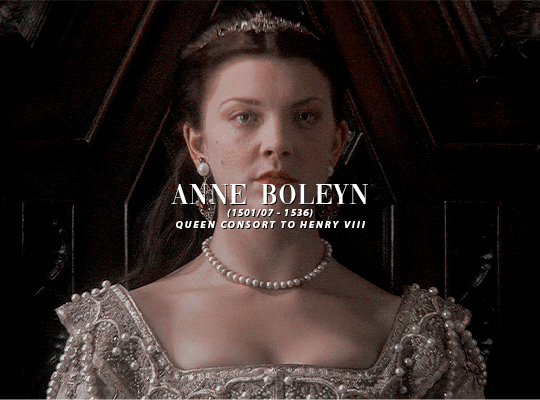#Eleanor of Aquitaine
Explore tagged Tumblr posts
Text

“What shall we hang? The holly or each other?”
Made a last minute print inspired by my favorite Toxic Christmas Movie, The Lion in Winter (1968). I always love doing a detailed piece like this! I’ll be selling prints at EBABZ tomorrow, but feel free to pick up a copy on my storenvy as well <3
#the lion in winter#tliw#the lion in winter 1968#my art#12th century#1960s movies#1960s#classic movies#illustration#Katharine hepburn#Peter O’Toole#eleanor of aquitaine#henry ii of england#cw animal death#cw blood#but its really fake dw#christmas#digital art#image description#image description in alt
959 notes
·
View notes
Text
A central element of the myth of [Eleanor of Aquitaine] is that of her exceptionalism. Historians and Eleanor biographers have tended to take literally Richard of Devizes’s conventional panegyric of her as ‘an incomparable woman’. She is assumed to be a woman out of her time. […] Amazement at Eleanor’s power and independence is born from a presentism that assumes generally that the Middle Ages were a backward age, and specifically that medieval women were all downtrodden and marginalized. Eleanor’s career can, from such a perspective, only be explained by assuming that she was an exception who rose by sheer force of personality above the restrictions placed upon twelfth-century women.
— Michael R. Evans, Inventing Eleanor: The Medieval and Post-Medieval Image of Eleanor of Aquitaine
The idea of Eleanor’s exceptionalism rests on an assumption that women of her age were powerless. On the contrary, in Western Europe before the twelfth century there were ‘no really effective barriers to the capacity of women to exercise power; they appear as military leaders, judges, castellans, controllers of property’. […] In an important article published in 1992, Jane Martindale sought to locate Eleanor in context, stripping away much of the conjecture that had grown up around her, and returning to primary sources, including her charters. Martindale also demonstrated how Eleanor was not out of the ordinary for a twelfth-century queen either in the extent of her power or in the criticisms levelled against her.
If we look at Eleanor’s predecessors as Anglo-Norman queens of England, we find many examples of women wielding political power. Matilda of Flanders (wife of William the Conqueror) acted as regent in Normandy during his frequent absences in England following the Conquest, and [the first wife of Henry I, Matilda of Scotland, played some role in governing England during her husband's absences], while during the civil war of Stephen’s reign Matilda of Boulogne led the fight for a time on behalf of her royal husband, who had been captured by the forces of the empress. And if we wish to seek a rebel woman, we need look no further than Juliana, illegitimate daughter of Henry I, who attempted to assassinate him with a crossbow, or Adèle of Champagne, the third wife of Louis VII, who ‘[a]t the moment when Henry II held Eleanor of Aquitaine in jail for her revolt … led a revolt with her brothers against her son, Philip II'.
Eleanor is, therefore, less the exception than the rule – albeit an extreme example of that rule. This can be illustrated by comparing her with a twelfth century woman who has attracted less literary and historical attention. Adela of Blois died in 1137, the year of Eleanor’s marriage to Louis VII. […] The chronicle and charter evidence reveals Adela to have ‘legitimately exercised the powers of comital lordship’ in the domains of Blois-Champagne, both in consort with her husband and alone during his absence on crusade and after his death. […] There was, however, nothing atypical about the nature of Adela’s power. In the words of her biographer Kimberley LoPrete, ‘while the extent of Adela’s powers and the political impact of her actions were exceptional for a woman of her day (and indeed for most men), the sources of her powers and the activities she engaged in were not fundamentally different from those of other women of lordly rank’. These words could equally apply to Eleanor; the extent of her power, as heiress to the richest lordship in France, wife of two kings and mother of two or three more, was remarkable, but the nature of her power was not exceptional. Other noble or royal women governed, arranged marriages and alliances, and were patrons of the church. Eleanor represents one end of a continuum, not an isolated outlier.
#It had to be said!#eleanor of aquitaine#historicwomendaily#angevins#my post#12th century#gender tag#adela of blois#I think Eleanor's prominent role as dowager queen during her sons' reigns may have contributed to her image of exceptionalism#Especially since she ended up overshadowing both her sons' wives (Berengaria of Navarre and Isabella of Angouleme)#But once again if we examine Eleanor in the context of her predecessors and contemporaries there was nothing exceptional about her role#Anglo-Saxon consorts before the Norman Conquest (Eadgifu; Aelfthryth; Emma of Normandy) were very prominent during their sons' reigns#Post-Norman queens were initially never kings' mothers because of the circumstances (Matilda of Flanders; Edith-Matilda; and#Matilda of Boulogne all predeceased their husbands; Adeliza of Louvain never had any royal children)#But Eleanor's mother-in-law Empress Matilda was very powerful and acted as regent of Normandy during Henry I's reign#Which was a particularly important precedent because Matilda's son - like Eleanor's sons after him - was an *adult* when he became King.#and in France Louis VII's mother Adelaide of Maurienne was certainly very powerful and prominent during Eleanor's own queenship#Eleanor's daughter Joan's mother-in-law Margaret of Navarre had also been a very powerful regent of Sicily#(etc etc)#So yeah - in itself I don't think Eleanor's central role during her own sons' reigns is particularly surprising or 'exceptional'#Its impact may have been but her role in itself was more or less the norm
425 notes
·
View notes
Text










"What does it mean to be a descendant of something monstrous? To still love the monster?"
On Earth We're Breafly Gorgeous, Ocean Vuong // How to Wear Your Mother's Lipstick, Warsan Shrine // Taint, Paul Tran // The Lion in Winter (1968) // Mirror Traps, Hera Lindsay Bird // No Human Hands to Touch, Elizabeth Wein // Family Tree (Intro), Ethel Cain // The Winter Prince, Elizabeth Wein // On Hysteria, Sam Sax
#web weaving#parallels#comparatives#on mothers#the lion in winter#the winter prince#on earth we're briefly gorgeous#ocean vuong#ethel cain#family tree#quote#quotes#literature#medea#medraut#morgause#eleanor of aquitaine#richard the lionheart#mothers and sons#song lyrics#lyrics#prose#movie script#sorry i just had to make this. bye#words#mothers#mother tag
216 notes
·
View notes
Text

828 notes
·
View notes
Text





Eleanor: You'd only just found Rosamund. Henry: Not her so damn particularly. I found other women. Eleanor: Countless others. Henry: What's your count?
+

#the lion in winter#peter o'toole#katharine hepburn#becket#eleanor of aquitaine#king henry ii#henry ii#thomas becket#rosamund#filmedit#peter o’toole#becket 1964#things i made#peter o’toole as henry ii cinematic universe
311 notes
·
View notes
Text
Today’s problematic ship is King Henry II and Eleanor of Aquitaine from The Lion in Winter
Toxic
Requested by anonymous




#i love these crazy kids#comship#proship#proship please interact#proshippers please interact#proshipper safe#the lion in winter#henry ii#eleanor of aquitaine#toxic
115 notes
·
View notes
Text

All the blossoms in my garden 🪴
An Angevin-Plantagenets family tree I made for my medieval art collection zine, “If All The World Were Mine!” The physical edition is now available, so check it out if you can :D
#the plantagenets#plantagenets#medieval#12th century#geoffrey of anjou#geoffrey plantagenet#Matilda of england#matilda lady of the english#henry ii of england#eleanor of aquitaine#henry the young king#matilda duchess of saxony#richard the lionheart#geoffrey duke of brittany#eleanor of castile#joanna of sicily#john lackland#john i of england#richard i of england#louis vii of france#philip ii of france#philip augustus#whew thats a lotta names#melusine#my art#family tree
82 notes
·
View notes
Text
👑🌹The Queen of Love and Beauty🌹👑
Round 2: 6 of 6
The Queen of Love and Beauty shall hold the honour of presenting unto the winner of the Tournament his Champion's Coronet.
Vote for the lady who, to you, best exemplifies feminine dignity, grace and loveliness
The three contenders with the most votes will advance.






Row 1
- Princess Isabella Maria Lucia Elizabetta of Valencia [Karen David], Galavant (2015-2016)
- Danielle de Barbarac [Drew Barrymore], Ever After: A Cinderella Story (1998)
Row 2
- Eleanore of Aquitaine [Katharine Hepburn], The Lion in Winter (1968)
- Guinevere [Angel Coulby], BBC’s Merlin (2008-2012)
Row 3
- Isabeau of Anjou [Michelle Pfeiffer], Ladyhawke (1985)
- Padmavati [Deepika Padukone], Padmaavat (2018)
#queen of love and beauty#queen of the tournament#love and beauty 2#princess isabella maria lucia of valencia#karen david#galavant#eleanor of aquitaine#katharine hepburn#the lion in winter#guinevere#angel coulby#bbc merlin#isabeau of anjou#michelle pfeiffer#ladyhawke#padmavati#padmavaat#deepika padukone
83 notes
·
View notes
Text

She ordered the assassiSLAYtion of the ArchMOTHER of CUNTerbury by asking “will no one rid me of this SERVEulant PUSSY?”
#katherine hepburn#welcome dear mutuals to jokes for Two People Only enjoy your slay I mean stay#eleanor of aquitaine#the lion in winter
261 notes
·
View notes
Text
the lion in winter is crazy what if you were queen of england and france and duchess in your own right and 800 years after your death some guy from chicago wrote about how you were in a psychological sadomasochistic relationship with your husband and your sons all wanted to fuck you….
24 notes
·
View notes
Text

HENRY: Isn't some agreement possible?
The Lion in Winter (1968)
69 notes
·
View notes
Text
The attraction of Eleanor of Aquitaine to post-medieval historians, novelists and artists is obvious. Heiress in her own right to Aquitaine, one of the wealthiest fiefs in Europe, she became in turn queen of France by marriage to Louis VII (1137–52) and of England by marriage to Henry II (1154–89). She was the mother of two of England’s most celebrated (or notorious) kings, Richard I and John, and played an important role in the politics of both their reigns. She was a powerful woman in an age assumed (not entirely correctly) to be dominated by men. She was associated with some of the great events and movements of her age: the crusades (she participated in the Second Crusade, and organized the ransom payments to free Richard I from the imprisonment that he suffered returning from the Third); the development of vernacular literature and the idea of courtly love (as granddaughter of the ‘first troubadour’ William IX of Aquitaine, she was also a patron of some of the earliest Arthurian literature in French, and featured in one of the foundational works on courtly love); and the Plantagenet–Capetian conflict that foreshadowed centuries of struggle between England and France (her divorce from Louis VII and marriage to Henry II took Aquitaine out of the Capetian orbit, and created the ‘Angevin Empire’). She enjoyed a long life (she was about eighty years old at the time of her death in 1204) and produced nine children who lived to adulthood. The marriages of her off spring linked her (and the Plantagenet and Capetian dynasties) to the royal houses of Castile, Sicily and Navarre, and to the great noble lines of Brittany and Blois-Champagne in France and the Welfs in Germany. A sense of both the geographical and temporal extent of Eleanor’s world can be appreciated when we consider an example from the crusades. Eleanor accompanied her husband Louis VII on the Second Crusade in 1147–9; when Louis IX went on crusade over a hundred years later, he left France in the care of Blanche of Castile, a Spanish princess and Eleanor’s granddaughter, whose marriage to Louis’s father had been arranged by Eleanor. Just this single example shows her direct influence spanning a century, two crusades and three kingdoms.
— Michael R. Evans, Inventing Eleanor: The Medieval and Post-Medieval Image of Eleanor of Aquitaine
#slay#eleanor of aquitaine#historicwomendaily#english history#french history#12th century#women in history#richard I#king John#Henry II#angevins#my post
75 notes
·
View notes
Photo





��� favourite queen consorts of england
#eleanor of aquitaine#isabella of france#philippa of hainault#elizabeth woodville#anne boleyn#house plantagenet#house tudor#house boleyn#house woodville#english history#englishqueens*#anneboleynedit#historyedit#my gifs#creations*
719 notes
·
View notes
Text


Thanks everyone for liking my Lion in Winter fanart! I had a lot of fun at EBABZ yesterday even though literally only ONE person recognized it lol (and I gave it out for free just for that hahah...shout-out to u!!!)
For the people who DO know the movie, you can get a copy of this print (as well as my other historical inspired works...) on my storenvy!
#the lion in winter#TLIW#Classic movies#Christmas#Medieval#12th century#Eleanor of Aquitaine#Henry II of England#Katharine Hepburn#Peter O'Toole#1960s#illustration#store
31 notes
·
View notes
Text





So yeah, I watched Disney Robin Hood recently and I just remembered one little thing. PJ and Richard’s mother is ELEANOR OF FU***** AQUITAINE !!! This woman was one of the most influent and powerful queen of her time. She was born as the heir of one of the most important duchies of France (half the lands of the country) and reigned over both France AND England (but not at the same Time) ! That girl is a damn Legend and it’s so funny to me that for John she is just his mommy. I don’t really think she was a negligent mother but she obviously had to focus on the education of her eldest who was destined to become king. The mommy issues are to me the expression of lack of confidence and egocentrism from the youngest who didn’t get as much attention as he wanted. Kinda makes me feel bad. Anyway, there is the Queen as a lioness and I think it suits her perfectly !
PS: yeah Sir Hiss is ugly :(
#my art#rough doodles#eleanor of aquitaine#prince john#king richard#disney#robin hood#robin hood 1973#prince John disney#history#medieval art#medieval#I totally give PJ the gay flag colors#and it’s intentionnal#also Richard is bisexual in my headcanon#like his historical self actually
43 notes
·
View notes
























